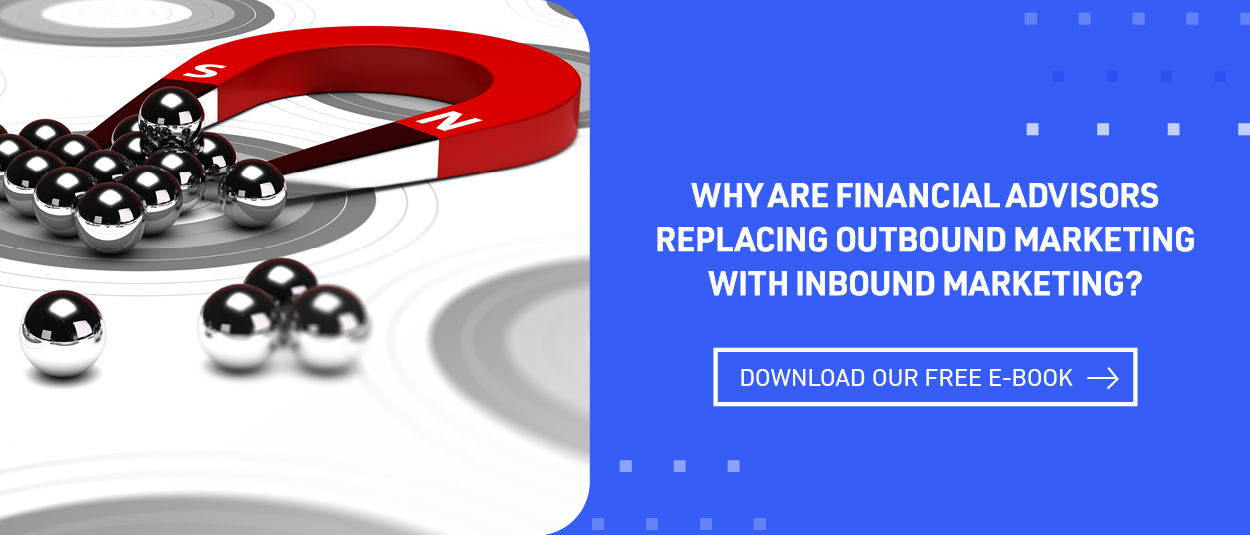

How Paid Advertising Helps Your Financial Advisor Sales Funnel
Anyone who enters the world of financial advisor digital marketing and advertising typically learns very quickly that establishing a digital marketing sales funnel is an integral part of understanding where your clients are coming from, and how to nurture them from someone who saw your financial advisor firm online to becoming a client.
Of course, this customer journey differs from that of a typical retail customer journey, where the conversions happen quickly and are mostly single-transaction-based. In that case, the retailer has a lot of work to do after the sale to build a stronger relationship with clients.
As a financial advisor, most of the work to bring a client to your firm takes place before that prospect has become a client and you have entered into a partnership. That’s why the steps of a digital marketing sales funnel are so critical. As with all digital marketing, there are many ways to produce leads including paid (SEM; Search Engine Marketing) and organic (SEO; Search Engine Optimization).
In this article, we are going to focus on financial advisor paid advertising and learn how this tactic can capture and nurture more prospects and turn them into clients using a sales funnel marketing approach.
First, let’s gain a better understanding of the sales funnel. In its most basic form, a sales funnel is composed of the stages a potential client goes through from Awareness to Action (also sometimes known as a sale or a conversion.) The sales funnel can be broken down into detailed sections, such as the AIDA(A) model.
While this model is helpful for understanding the detailed steps of the funnel, the goal of this conversation is to discuss the specifics of how paid advertising can specifically move from awareness to action. While most digital marketers want to minimize expense, which is understandable, it’s important to understand how valuable even a fraction of your overall budget can be when put to use in your digital marketing funnel.
In addition to increased traffic, increased awareness, and the addition of new clients, using paid advertising can help you understand a great deal more about your ideal audiences. This includes their behavior, needs, intent, goals, and other identifying factors that help you know not only who they are online, but where they are online.
As mentioned above, the funnel can be drilled down into multiple detailed sections, we’re going to stick with the 3 general phases to the funnel: top, middle, and bottom to help illustrate how paid advertising can be put to use for guiding potential clients to your services.
Top - Generate Targeted Traffic (Advertisement)
Because the medium is paid vs. organic, you have the ability to target your audience(s) with specific messages that appeal to them. Remember, at this stage, the client has no idea who you are and is simply seeking a solution to a financial problem. By using the right tools and strategies, your paid advertising can attract the right visitors whose problems you can actually solve!
Remember, investors can’t contact you if they can’t find you on the Internet. Once they find you, the funnel strategy can take over.
But in order to attract them, you may have to understand more about them. This can be achieved by using the right advertising tools. For example, Google ads use paid search terms to deliver your information to someone who used the right keywords to search for a specific service, service provider, or financial topic.
For example, if you are a financial advisor who specializes in college savings plans, you can pay to be in front of people who use specific keywords to search for your type of service provider. Sure, good organic SEO will get you to show up somewhere in the results, depending on the competition for the search parameters and keywords, you may be buried several pages back. Think of paid advertising as “skipping the line” and jumping ahead to get your results shown to more people faster on page one.
Why page one? Because 91.5% of Google users do not scroll to page two. Only 4.8% scroll to page two and 1.1% to page three.
Middle - Provide a Compelling Offer with Call to Action
At this stage, content becomes critical. Your paid advertisement (top-funnel) has brought visitors to your landing page or website and it’s their job to create conversions. Through the use of quality curated content, these visitors can see all of the ways in which you can solve their problems. This can include checklists, white papers, eBooks, blog posts, infographics, videos, or anything else that lets them get to know you and your firm in a very positive light that is controlled by you.
The goal of this process is to get them to move further down the funnel and to establish yourself as a knowledgeable, trustworthy and capable partner who understands their needs and financial goals. Without great content, this prospective client may spend 30 seconds on your website, find nothing relevant to their needs, and move on to the next search result or display ad that they see. To avoid losing a potential prospect forever, make sure you have timely, relevant, and organized content on a user-friendly website.
Bottom - Create an Optimal Conversion Event
When thinking about the digital financial advisor funnel, it helps to envision an upside-down triangle. Because the top two tiers are all about awareness and action, they start large and get smaller as people who aren’t a good fit for your business or choose to leave via an opt-out function are weeded out.
This means when speaking in terms of quality over quantity, the prospects that are left are the most appealing and likely to convert into revenue-producing clients. The question is: how to keep this momentum going and turn this lead into a bona fide client. Because financial advisors provide a service, and not a tangible product, the jump from prospect to client can take more nurturing than in other industries.
This also means oftentimes communication, and sometimes a little positive interaction can go a long way to meeting potential clients’ expectations. Pre-pandemic, this could be achieved through in-person seminars providing lunch, a seminar or workshop, and a time to sit down and discuss specifics with these prospects.
However, given the growing number of in-person events and meetings going virtual, this practice needs to be reimagined. Consider turning an in-person event into a virtual “roundtable”, webinar, or discussion where the numbers are kept low and there’s plenty of time for a back-and-forth conversation.
In order to have the appeal of a free dinner, your marketing strategy has to be strong enough to offer a direct benefit your prospects can’t refuse to consider. Regardless of your choice of conversion tactics, be sure it’s so compelling that it really pushes your prospects to become the revenue-producing clients everyone is seeking.

Debbie Freeman
Search Here
Categories
- AI (18)
- blogging (2)
- branding (1)
- content (12)
- custodians (1)
- Digital (535)
- email marketing (3)
- fcmo (3)
- fees (1)
- financial advisor marketing (66)
- Google (3)
- Ideas & Tips (125)
- Investor Experience (7)
- lead generation (7)
- linkedin (1)
- Marketing (605)
- newsletters (1)
- Online Transparency (2)
- podcasting (1)
- search engine optimization (4)
- seo (9)
- Social Media (2)
- video (3)
- Websites (172)
- YouTube channel (2)
Recent Posts
-
 October 22, 2025
October 22, 2025 -

-

Top 10 Business Challenges for Smaller Financial Advisor Firms
October 16, 2025 -

How Financial Advisors Use AI to Optimize Website Compliance
October 14, 2025 -

AI Blogging On Your Financial Advisor Website
October 10, 2025

